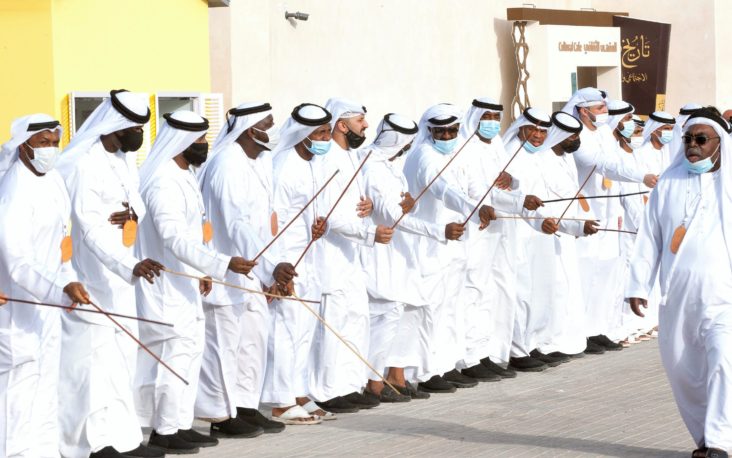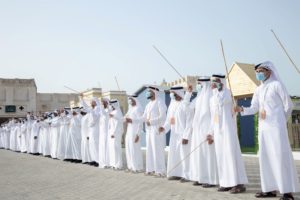Ayyala Dance At Sharjah Heritage Days Showcases Emirati Culture Through Rich Social Tradition

A highlight of this year’s Sharjah Heritage Days (SHD 2021), running from March 20 to April 10,is the eight Emirati folkloric arts and dances – Ayyala, Nuban, Andima, Razif and Rawahh, Harbiya, Liwa, Habban, and Daan.
Taking place in the historic Heart of Sharjah district and the Khorfakkan heritage area, Sharjah Heritage Days seeks to highlight the heritage and rich culture of the country, and its dance forms are a distinctive part of its cultural and social fabric, making an appearance at weddings, festivals and national holidays.
While instantly recognisable with its use of thin wooden sticks, most people are unfamiliar with the fact that Ayyala dancing is inscribed on UNESCO’s Representative List of the Intangible Cultural Heritage of Humanity. It recognisesAyyala as “among the significant social rituals that contribute to the spirit of dignity and honour of the coastal and domestic social groups and communities.”
Featuring two rows of men who dance facing each other, the Ayyala is guided through songs or poetry from a leader designated as Al Abu (“father”), while the men create a dual chorus, waving the sticks in a rhythmic fashion. One such Al Abu is Khamis bin Al Suwaidi, a heritage arts expert and a key figure in promoting and preserving traditional dances in the UAE, who is leading Ayyala performances and giving workshops at the 18th edition of SHD.
“Ayyala is storytelling in dance form,” Al Suwaidi says. As the dancers take turns to chant poetry or sing songs, they may be performing to the tunes of love, war, praiseor tribute. The verses are repeated and switched several times in a chanting style. “It truly embodies the spirit and essence of Emirati identity, in the past and continuing in the present day.”
Ayyala is also characterised by the artists who play special instruments in the middle of the dancers. “Al Toos, or cymbals made of copper are used to accompany and harmonise the rhythm of the Ayyala, while Al Tar or Riqq is a tambourine made of goatskin stretched over a wooden frame. Al Ras is the bass drum that initiates the rhythmic beat of Ayyala, and Takhamir is the drum that adjusts the rhythm after Al Ras,” explains Al Suwaidi.
The expert is also releasing his book on Ayyala during the current edition of Sharjah Heritage Days.
While Ayyala dancing may seem uniform and standard in movement to a regular viewer, there are moves and nuances that form a narrative and story. “For instance, as the drummer moves towards one side of the dancers, they raise the sticks in a war-like motion. The drummer then bows down to show that ‘I am a friend, not a foe’. Then the singers go back to the rhythmic rotation and signing,”Al Suwaidi describes.
The 18th edition of SHD promises the public more of such unique customs and traditions, from the UAE and 29 countries around the world. Traditional Arab heritage will be showcased through 22 activities, including seminars and workshops at the 22 day-long festival.


